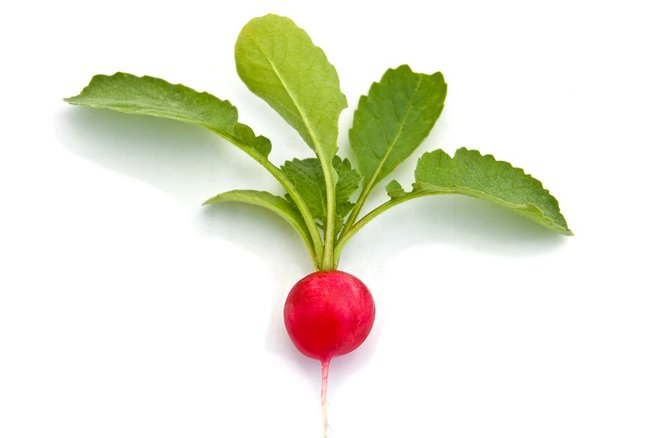New vegetables are young vegetables that appear for the first time in the season. They are a great source of vitamins and minerals that our bodies ask for after winter - especially if it lasts a long time. These include primarily radishes, cucumbers, chives, spring onions, tomatoes, dill, lettuce, parsley and lettuce.
Their cultivation period lasts from March to June and for most of this period we can usually buy those grown in greenhouse conditions (sufficient conditions for cultivation in the field appear only in the second half of May). This means that they may not have as much taste as those grown in the field due to the much smaller amount of sunlight reaching them, but they are still an ideal addition to the diet after winter.
WHAT WILL WE FIND IN NEWS?
Parsley it is a great source of vitamin C, E, iron, beta-carotene and folic acid. It strengthens immunity, supports digestion, has a diuretic effect, and helps eliminate bad breath. Due to the presence of the "vitamin of youth", it supports the condition of the skin.
Chives comes from the garlic family. Due to the presence of allicin, it has antibacterial properties. It is an excellent source of vitamin K. It contains carotenoids, including: lutein and zeaxanthin, which support the eyesight, as well as copper, iron and magnesium. Sulfur compounds contained in garlic have anti-cancer properties - pro-apoptotic, i.e. inhibiting the multiplication of cancer cells, and anti-proliferative, i.e. leading to their death.
Radishes – rich in sulfur compounds, so they will support the condition of hair and nails. It is also a good source of potassium, which may help lower blood pressure. Also recommended for stimulating appetite and supporting digestion - it has a choleretic effect.
Tomatoes – a treasure trove of potassium and lycopene. The latter has a strong antioxidant effect. They lower blood pressure and cholesterol levels, and thus have a positive effect on the functioning of the heart. A medium tomato covers half of the daily requirement for vitamin C. It has also been shown to have anti-cancer effects, especially in the context of prostate cancer in men.
Lettuce – a good source of vitamins K, C, folic acid, iron and B vitamins.
Dill – a source of vitamin C, folic acid, iron and zinc. It supports blood vessels and relieves digestive problems - abdominal pain, flatulence.
Carrot – primarily a source of carotenoids – lutein, zeaxanthin, lycopene and beta-carotene. The latter, or provitamin A, is transformed in our body into vitamin A, the supply of which has a beneficial effect on vision.
All new vegetables are also a good source of dietary fiber and are low in calories.
Many people have doubts about the type of cultivation of new nuts and the safety associated with it - specifically, nitrogen fertilizers used mainly in greenhouse cultivation.
Nitrogen is found naturally in plants, but too intense fertilization causes it to accumulate in them because they absorb it in the amounts they receive, not in the amounts they need, and they are unable to process such amounts. Nitrates, in turn, are reduced to nitrites, which are the precursors of N-nitrosamines, which have carcinogenic effects (during heat treatment at high temperature, in the presence of proteins). What is the reason for administering high doses of nitrogen fertilizers? Low sunlight. The goal is faster growth and obtaining biologically valuable crops. The most nitrates accumulate in green leafy vegetables - especially lettuce.
Greenhouse cultivation is therefore also considered to be less valuable from the point of view of nutritional properties, but this cannot be generalized - it all depends on the type of soil, the intensity and type of use of fertilizers and pesticides, and the moment of harvest.
However, is it worth giving up eating fresh fruit for the above reasons? Of course not! However, it is worth remembering a few tips aimed at reducing excess doses of unfavorable substances.
Here they are:
Wash and soak thoroughly – e.g. lettuce. Nitrates and nitrites dissolve in water! We can reduce their number by up to approximately 20%. It is also worth peeling young vegetables - yes, we also get rid of the beneficial substances contained in the peel, but it is worth it, because most nitrates are found directly under the peel.
Be careful with the products rotten or showing traces of mold, even if someone wants to sell them to us for next to nothing! Remember - if something has even the slightest amount of mold on it, you should absolutely throw it away, it's not enough to just cut it off!
Avoid plastic packaging and bags - the lack of oxygen creates an ideal environment for the transformation of nitrates into nitrites.
If you can, choose vegetables from organic crops, because they are subject to strict control at all stages, also in the context of the use of fertilizers and pesticides.
If you can, don't buy them "in stock", but on an ongoing basis - if kept in a glass of water or loosely in the fridge, they may wilt and lose their firmness quite quickly. Containing them in glass containers/jars helps keep them fresh/crispy for longer, but - as we write a few lines above, the lack of oxygen promotes the reduction of nitrates to harmful nitrites.
Eat greens for health! 🙂

